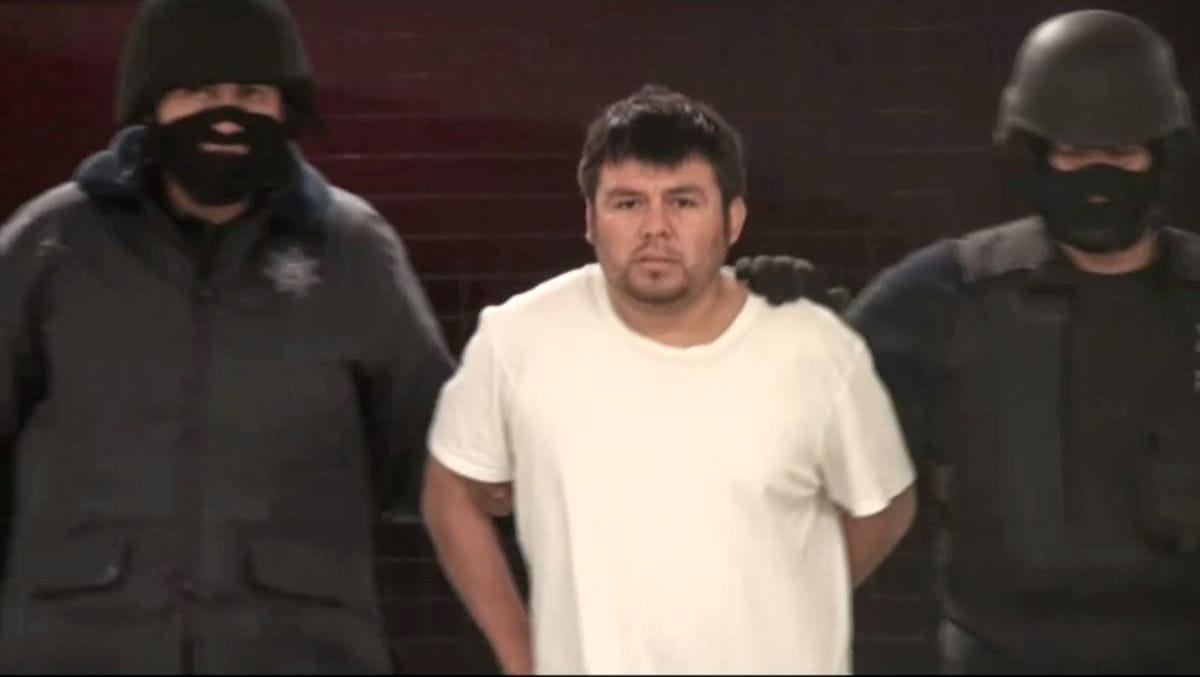The Ghost of Ayotzinapa Haunts "El Cepillo" Once More
Felipe Salgado Rodríguez, "El Cepillo," a key figure in the Ayotzinapa case, has been re-arrested. Accused of leading the criminal group Guerreros Unidos, he was previously released due to lack of evidence and allegations of torture.

The Ayotzinapa case, now marking its tenth year, remains an enduring symbol of justice delayed, marred by impunity, and the painful intersection of organized crime and state complicity in Mexico. The recent recapture of Felipe Salgado Rodríguez, known as El Cepillo or El Terco, reawakens the ghosts of a tragedy that shook the nation and reverberated far beyond its borders. But with this arrest, the question arises: does this act signify progress toward justice, or is it just another chapter in a seemingly endless cycle of corruption, failed investigations, and unfulfilled promises?
In the early hours of September 20, in the coastal city of Acapulco, Guerrero, personnel from the Federal Ministerial Police stormed a house in the Las Vigas neighborhood. The operation culminated in the re-arrest of Rodríguez Salgado, who had walked free in 2018 after the courts ruled that his confessions were extracted through torture. For the families of the 43 missing students from Ayotzinapa, this re-arrest is an echo of the past, a glimmer of hope tinged with the bitter memory of repeated failures to hold those responsible accountable.
El Cepillo, a key member of the Guerreros Unidos cartel, has long been identified as one of the men responsible for the gruesome fate of the students. After his initial capture in 2015, he reportedly confessed to executing several students and overseeing the incineration of their bodies at a municipal dump in Cocula. These confessions, delivered under duress, formed part of what was controversially labeled by the government of then-president Enrique Peña Nieto as the historical truth—a narrative that has since been discredited and dismantled piece by piece.
The court that freed Rodríguez Salgado in 2018 cited insufficient evidence and the illegal methods used by the investigators, including the role of Tomás Zerón de Lucio, the former head of the Criminal Investigation Agency (AIC), now a fugitive from justice. Zerón, implicated in acts of torture and tampering with evidence, represents the dark undercurrent that has tainted the case since the very beginning. Rodríguez Salgado’s release was a stinging blow to a public already disillusioned with the government's handling of the case. Now, five years later, his re-arrest stirs both cautious optimism and profound skepticism.
The official version, or the so-called historical truth of the Ayotzinapa case, has always been a fragile narrative. It posited that corrupt police officers, acting on the orders of the Guerreros Unidos cartel, abducted the students on the night of September 26, 2014, in Iguala, Guerrero, and subsequently handed them over to cartel members, who executed and incinerated them. Their remains were allegedly thrown into the Cocula River, and for years, the government clung to this story as the definitive account.
But families of the missing, civil rights activists, and independent investigators have long rejected this narrative, demanding deeper scrutiny into the roles played by various levels of government, the military, and other state institutions. Over the years, cracks in the story have appeared. Evidence of torture, tampered confessions, and conflicting reports of what transpired that night began to surface. As the years passed, it became clear that the Ayotzinapa case was not just an isolated tragedy involving organized crime but a state crime, where local and federal authorities, both directly and indirectly, had blood on their hands.
The re-arrest of El Cepillo and others who had been freed on technicalities serves as a reminder of the government’s renewed attempts to rewrite this dark chapter. Yet, this gesture remains symbolic without substantive legal victories or the uncovering of new, irrefutable evidence that could truly bring closure to the victims’ families.
The Weight of Ten Years
As the tenth anniversary of the Ayotzinapa tragedy looms, the wounds remain as raw as ever. The families of the missing students have spent the past decade locked in a relentless battle for truth and justice. Protests, hunger strikes, and rallies have become a mainstay in Guerrero and across Mexico, with demonstrators expressing their rage at the perceived inaction and false promises of various administrations. In Chilpancingo, on the eve of the recapture, students and families voiced their discontent through actions both symbolic and defiant: burning vehicles, vandalizing government offices, and staging rallies outside military installations they believe were complicit in the disappearances.
The families, led by vocal and resilient figures such as Cristina Bautista, the mother of missing student Benjamín Asencio Bautista, are a testament to unwavering courage in the face of state indifference. In the shadow of a newly erected memorial for the 43 missing students in the capital of Guerrero, Bautista delivered a powerful message: the fight will not end with the change of government. With Claudia Sheinbaum set to assume the presidency in October 2024, the families demand continuity in their search for the truth. Yet they are acutely aware that political transitions often mean shifting priorities, and the fear that the next administration may not fully honor their demands lingers heavily in the air.
The recapture of El Cepillo coincides with renewed governmental efforts to reevaluate the Ayotzinapa investigation. President Andrés Manuel López Obrador (AMLO), upon taking office, promised to deliver answers to the families of the missing students. He formed a truth commission, declared the disappearances a state crime, and pushed for the prosecution of high-profile figures like Zerón. But despite these actions, the process has been slow, and for many, justice seems as elusive as ever.
For the families, this latest arrest is both a step forward and a reminder of the failures that have plagued the case. The specter of impunity still looms large, and the Ayotzinapa tragedy remains a painful example of how deeply organized crime has penetrated the state apparatus. While the return of Rodríguez Salgado to custody is significant, it is unclear whether this marks a genuine turning point or simply another fleeting development in a decade-long saga of injustice.
Ten years on, the memory of the 43 missing students haunts Mexico. Their faces, immortalized in murals and protest banners, have become symbols of a nation's struggle against corruption, violence, and state-sanctioned impunity. The case of Ayotzinapa is not just a story of 43 young lives cut tragically short; it is the story of a country grappling with the weight of its own failures—failures to protect its most vulnerable citizens, to hold accountable those who abuse power, and to confront the terrifying reality that crime and governance have become dangerously intertwined.
As the years pass, the families of the missing students remain vigilant, refusing to allow their children’s stories to fade into obscurity. The re-arrest of El Cepillo may offer a flicker of hope, but the fight for truth and justice in Ayotzinapa is far from over. The nation still waits, breathless and weary, for the day when justice is not just promised but delivered. Until then, the shadows of Ayotzinapa will continue to loom large over Mexico’s collective conscience, a tragic reminder of what has been lost and what still needs to be found.




